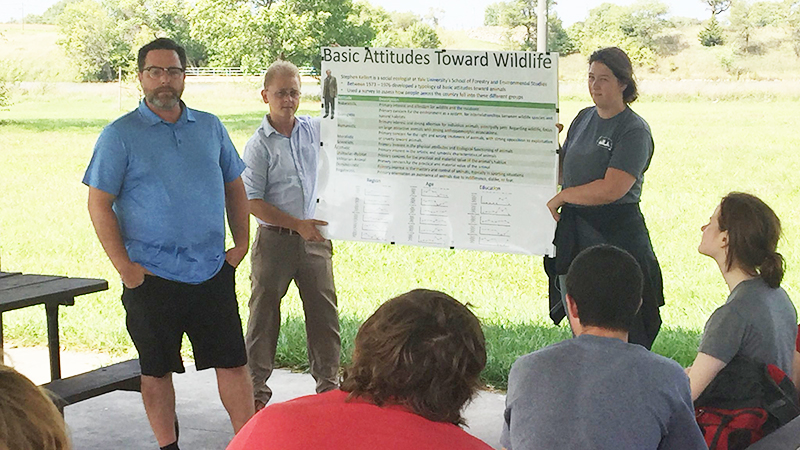


Teaching at SNR
What makes our teaching philosophy unique?

We offer an extensive array of experiential learning opportunities from certifications to research to internships.

We have a 1:4 faculty-to-student ratio so your professor actually knows your name and cares about your academic success.

Faculty have create a variety of tools to supplement traditional teaching techniques.

Faculty work collaboratively to share techniques within our teaching community.
Teaching Profile
Lisa Pennisi


What do you like most about teaching and mentoring your students?
Knowing students are learning — especially those "aha" moments when things come together. And knowing I am helping students fulfill their dreams and preparing future generations to help natural resources. I tell students I consider my job as preparing them for success by helping them learn skills that will help them land that first big job, really succeed in that job so they earn promotions, and achieve their dream career. I especially love learning about student's successes.
What do you think is the most important thing for students to know about interacting with faculty at Nebraska?
That we really want them to learn, grow, and succeed. We are here to help; we want to help. Get to know as many of us as possible. If we know what a student is interested in, we can send job opportunities their way. The more we know a student, the better recommendation letters we can write.
Lord Ameyaw

Other than your time in the classroom, how do you connect with students?
Connecting with students both inside and outside the classroom is core to my understanding of what teaching should be. I believe such connections are perpetual and so I make a conscious effort to create a two-way street getting to know my students. I also like to maintain a welcoming environment as well as a fluid communication channel for both academic and non-academic exchange.
What do you think is the most important thing for students to know about interacting with faculty at Nebraska?
Faculty strive to foster a collegial atmosphere to encourage students to connect with faculty. Students need to take advantage of this to share thoughts, comments, as well as challenges to ensure an efficient teaching and learning process.
Chris Chizinski

What do you think is the most important thing for students to know about interacting with faculty at Nebraska?
Get to know faculty through classes and reaching out. Working in someone’s lab or volunteering on a project is one of the best ways to get experience. You never know how working with a professor could steer you down a career path you had not thought of.
How does what you teach your students prepare them for success in their professional and personal lives?
In NRES 315 (Human Dimensions of Fisheries and Wildlife), I bring in 4-5 guest speakers from Nebraska Game and Parks to illustrate how humans are incorporated into fish and wildlife management. All the speakers help emphasize how much time in fish and wildlife is actually spent communicating and interacting with people. My classes provide the basic information and skills to better understand and incorporate people into natural resource management decisions
Jessica Corman


How does what you teach your students prepare them for success in their professional and personal lives?
In my limnology class, I teach students about the hydrology, chemistry, and ecology of lakes. But, more importantly, I try to teach them to think critically and to use the hypothetico-deductive method (aka, the scientific method) to make rational conclusions about information that is presented to them.
Also, I get to teach students that Nebraska isn't just a land of corn. Yes, there is a lot of corn around, but those fields would not survive without the streams, rivers, and lakes that also cover the landscape. And, those aquatic ecosystems are pretty incredible in their own right - they provide habitat for plants and animals and places for us to swim, paddle, or fish.
What do you like most about teaching and mentoring your students?
Sharing in the excitement of discovery and learning new things from my students.
Our Latest Teaching News

Read more...

Read more...

Read more...